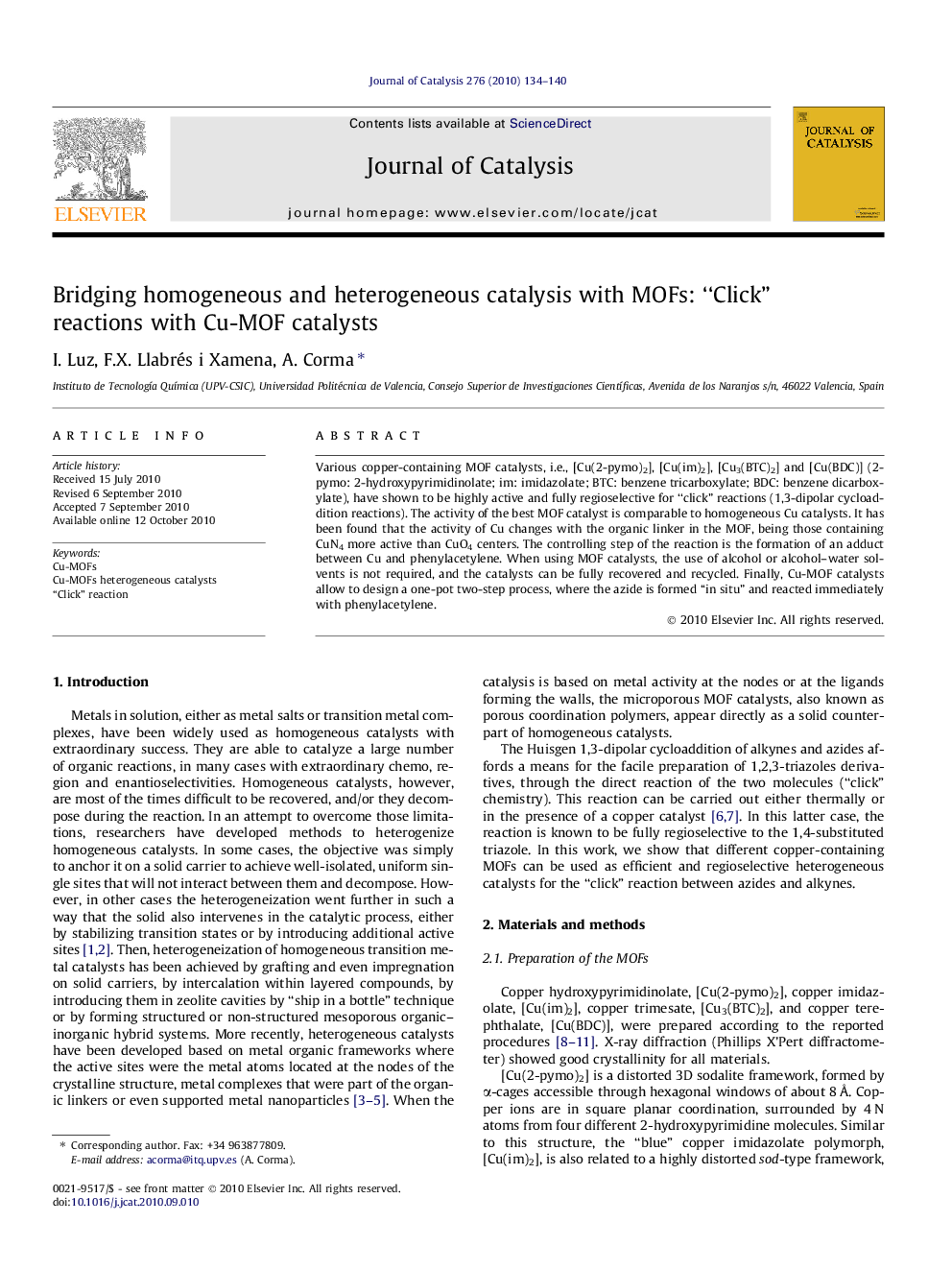| Article ID | Journal | Published Year | Pages | File Type |
|---|---|---|---|---|
| 62063 | Journal of Catalysis | 2010 | 7 Pages |
Various copper-containing MOF catalysts, i.e., [Cu(2-pymo)2], [Cu(im)2], [Cu3(BTC)2] and [Cu(BDC)] (2-pymo: 2-hydroxypyrimidinolate; im: imidazolate; BTC: benzene tricarboxylate; BDC: benzene dicarboxylate), have shown to be highly active and fully regioselective for “click” reactions (1,3-dipolar cycloaddition reactions). The activity of the best MOF catalyst is comparable to homogeneous Cu catalysts. It has been found that the activity of Cu changes with the organic linker in the MOF, being those containing CuN4 more active than CuO4 centers. The controlling step of the reaction is the formation of an adduct between Cu and phenylacetylene. When using MOF catalysts, the use of alcohol or alcohol–water solvents is not required, and the catalysts can be fully recovered and recycled. Finally, Cu-MOF catalysts allow to design a one-pot two-step process, where the azide is formed “in situ” and reacted immediately with phenylacetylene.
Graphical abstractCopper-containing metal organic frameworks are highly active and fully regioselective heterogeneous “click” catalysts, with performances comparable to homogeneous Cu catalysts.Figure optionsDownload full-size imageDownload high-quality image (122 K)Download as PowerPoint slide
